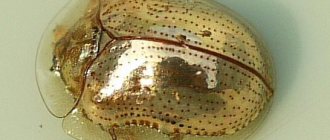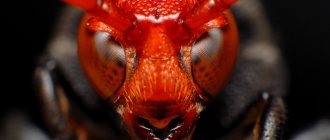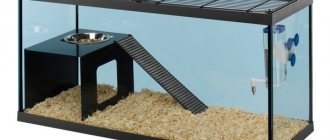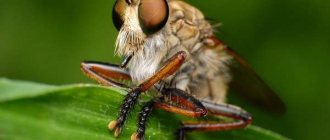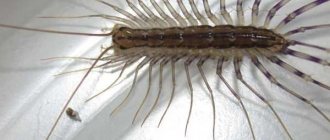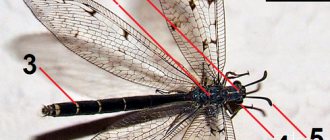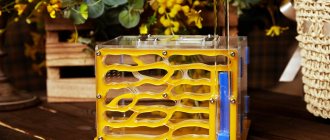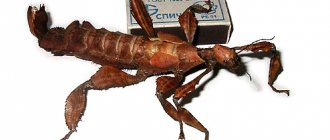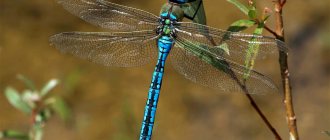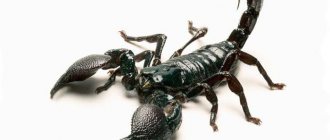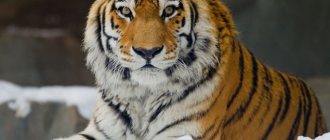Termites, popularly called “white ants,” are actually related to cockroaches since ancient times. Their similarity with ants is only in the fact that they are the same social insects, they also build nests that communicate with each other, creating numerous families in them. The termite family is divided into castes in the same way as ants, where each has its own role. Cockroaches do not have such distinctive qualities.
Appearance and classification
Based on their role in the social organization of the colony, termites are divided into workers, larvae, soldiers, mature individuals, king and queen.
Termite worker
Workers look like larvae, their cover is plastic, without color. The worker termite looks inconspicuous: a rounded head, an underdeveloped thoracic region, eyes that are underdeveloped and sometimes absent. Gender is not expressed outwardly. The main responsibility of workers is to feed all other inhabitants of the nest and ensure their livelihoods.
Termite Soldier
Soldiers are a class of working individuals. Needed for the protection and protection of the family; They are distinguished by an enlarged head capsule and large powerful mandibles, which they use to defend themselves against enemies. Because of this structure, the soldier cannot eat on his own; he is fed by a worker termite.
Many species have special types of warriors: proboscis soldiers, termites with a trunk. They never leave their positions because they are completely blind. Only the front part of their body is armored, while its second half and limbs are not protected and are vulnerable to bites.
King and Queen
At the heart of the nest is the most significant place for the family - the royal chamber. It is inhabited by a royal couple, which performs exclusively reproductive functions. They live together all their lives. The only purpose of the female queen is to lay eggs, their number per day reaches 3 thousand.
As the colony grows, the queen's body becomes deformed: her abdomen, filled with eggs, enlarges, and the rest of her muscles atrophy. She hardly moves, her needs are satisfied by working individuals. If the colony grows larger or the queen weakens, other individuals appear capable of reproducing.
The male king is small compared to the queen, the size of an ordinary soldier, and is similar to those who are on duty nearby, protecting the royal cell.
Founding of the colony.
Also on topic:
PROTOZOTS
New colonies are founded by winged males and females. In the tropics this usually occurs at the beginning of the rainy season. They fly out of the parent nest in a swarm through exits made by workers or nymphs. Having flown from several to several hundred meters, they land, shed their wings and form pairs. The female attracts the male with the volatile secretion of the abdominal gland, after which he follows her, together they dig a hole, seal the entrance to it and mate inside. A few days later the first eggs are laid. The parents feed the nymphs that hatch from them, and after molting several times, they become workers or soldiers. Winged individuals will appear in the colony only when it “ripes”, i.e. will become densely populated - usually in two to three years. Formed workers take upon themselves all further care of obtaining food and building a nest.
Types of termites
Science has identified more than 2,000 termite species. Scientists divide their entire squad into several large families.
African
A small family of African harvester insects are distributed in the tropical forests, savannas, semi-deserts and deserts of Africa and India. They are characterized by earthen termite mounds with a special microclimate, a large number of individuals and peculiar behavioral traits. Their main feature is the way they obtain food: they cut dry grass with their jaws or chew dead wood and carry it to the nest.
Yellowneck
Habitat: Southern European and Central Asian parts of Eurasia. They live in trees, but build nests in dying parts with rotten wood. Do not sharpen living plants.
Families are small, consisting of several dozen, sometimes several hundred insects. The development of the colony occurs slowly: pseudoergates (prototypes of working individuals) are gradually formed from the larvae. Soldiers are formed from nymphs or pseudoergates; they make up about 5% of the total number of inhabitants of the family.
Far Eastern
This species accidentally took root in Vladivostok, arriving there with foreign cargo. Widely known:
- in the countries of Southeast Asia;
- Japan;
- South Korea.
In the 70s of the twentieth century, scientists discovered foci of its spread - pests were recorded in old wooden buildings. The species is variable and evolves depending on living conditions.
Heliophobic
Colonies of this family are found on different types of soils. Nests are built in rotting parts of trees. Cells for inhabitants are located at a depth of up to 60 cm, divided evenly, there are no dedicated chambers for eggs, larvae or royal pairs. They are universal - they feed on rotten wood, actively damaging logs, boards, and wooden parts.
Diet
Almost all types of termites feed on cellulose. In the digestive tract of working individuals there lives a special type of microorganisms that destroy cellulose. Therefore, only they are able to feed the queen, as well as the soldiers. The diet of these insects is based on dead trees and shrubs, fallen leaves and humus. Some species consume green spaces for food, causing damage to tea plantations and cereals.
At the same time, there is a progressive species “Termitidae” that lacks microorganisms that allow them to process cellulose. Therefore, scientists still do not know the cellulose breakdown mechanism that operates in this species.
Termites, as far as we know, feed not only on cellulose, since they grow a certain type of fungus in the termite mound. Carrying leaves and pieces of wood into their nests, they crush them and plant fungal spores on them.
The fungi are destroyed by inedible lignin, after which the food acquires different properties and is easily digested by termites. Therefore, termites happily eat entire gardens of mushrooms, as well as other food enriched with nutritional components. Mushroom gardens are the main source of food for the larvae.
Interesting Facts! A certain A. Brem shared an interesting fact with his comrades. One day, an Arab fell asleep near a termite mound, and when he woke up, it turned out that he was completely naked, because the termites had eaten all his clothes. In the 18th century, termites accidentally appeared on the island of St. Helena, after which they completely ate the city of Jamestown.
Termites that are found in our territories are not distinguished by such gluttony. It is believed that the damage from the Ashgabat earthquake would not have been so critical if termites had not damaged up to 25 percent of houses.
Termites are insects that are very sensitive to temperature conditions, humidity, and light. Therefore, they mainly eat wooden structures from the inside and rarely appear outside. In this regard, it always seems that the tree trunks are intact and unharmed. The activity of termites annually causes enormous damage to the economies of many countries. Different species of termites have different shaped nests.
Habitats
Termites live in regions with subtropical and tropical climates. Termites live in colonies in their homes built in wood or soil. Distinctive features include the construction of nests located above the surface of the ground. These termite mounds can support up to several million inhabitants. The lifestyle is secretive, usually nocturnal.
Occurrence
The soldier caste is noted in many species of ants and termites and some other animals.
Termites
Termite soldiers are known to come in the most unimaginable forms. Soldiers' mandibles are long, triangular, asymmetrical, thick, thin, horn-shaped, and crossed. Soldiers of some species produce glue that is sprayed on the enemy, or poison that is applied to the enemy by hitting him with his head. The design of the weapons and the methods of their use indicate that termite soldiers are unsuitable for offense and are effective only for defense. Some species of termites can only be identified by their soldiers.
Ants
Some ant soldiers have forgotten how to feed without outside help. This applies in particular to large soldier ants and some social parasites such as Amazon ants.
Other insects
In the bee Tetragonisca angustula
individual soldiers differ from workers in being larger in size.
Glyptapanteles wasps
Special eggs act as soldiers, controlling the behavior of the host so that it protects the parasite pupae.
In some aphids: Tuberaphis styraci
,
Pemphigus spyrothecae
and
Pemphigus spyrothecae
.
Other fauna
Naked mole rats live in eusocial colonies, in which the largest non-breeding individuals are soldiers who defend the colony from other clans and from predators.
Trematodes are parasites from a type of flatworm - one of the species of the genus Himasthla
are divided into larger queens, capable of reproducing, and more mobile soldiers, protecting the colony from enemy invaders.
Some individuals in bryozoan colonies have a defensive function, protecting the colony from predators.
Sea anemone Anthopleura elegantissima
in a suitable place, it forms a colony by budding, the outer members of which are soldiers and protect the territory from competitors - they are smaller than their relatives and they do not have gonads.
Bacteria
Some species of bacteria have the ability to self-sacrifice. For example, if a colony of another competing bacterium appears next to a colony of E. coli, then one E. coli out of every few thousand begins to produce a substance that is toxic to the other bacterium and dies from self-poisoning. The amount of poison released depends on where the bacterium is located. For example, when the intestines are infected with the bacterium Salmonella typhimurium
only 15% of individuals located in the intestinal lumen secrete poison, and almost all of those located on the intestinal walls.
Viruses
When other viruses are cultivated in the same cell with some viruses, for example HIV, i.e. in a mixed population, “minimal forms” appear in the virus population, differing from the usual virus in size (they are 2-3 times smaller) and in an incomplete genome . Perhaps they are needed to suppress competitors.
Relatives of termites
The closest relatives of termites are wild cockroaches, some species of which at the present stage of evolution are found in almost similar forms.
- Female cockroaches of the genus Panesthia shed their wings before laying eggs, similar to queens.
- In the wood-boring cockroach, the female queen behaves in the same way with her offspring.
- Cryptocercus cockroaches eat their way through rotting trees and feed on decaying cellulose. Their internal organs contain bacteria, like termites, that help process food.
Despite their social similarity, termites are not related to ants. Termites are an order of partially metamorphosed insects, and ants are members of the order Hymenoptera.
Symbiotic protozoa.
The hindgut of termites from four relatively primitive families (Mastotermitidae, Kalotermitidae, Hodotermitidae and Rhinotermitidae) is home to symbiotic flagellated protozoa (Protozoa). Their enzymes convert cellulose into soluble sugars, which are absorbed in the midgut of insects. About 500 species of protozoa are known to lead such a mutualistic lifestyle, and, apparently, they have evolved in close relationship with their hosts and both sides cannot exist without each other. The most advanced termite family, Termitidae, which unites approximately three-quarters of all living species, does not have simple symbionts. The physiology of digestion of cellulose and its derivatives by these insects is not yet fully understood.
Termitophagous animals
During flight, insects leave the nest to try their luck outside and create a new family. As a result, they become easy prey for birds, ants, frogs, lizards, as well as dragonflies, hedgehogs, bats and other insectivores. In the animal world there is a whole order of mammals that feed on termites.
In Australia
In Australia, their main eaters include the primitive marsupial platypus and its relative the echidna. Nocturnal bats also hunt for termites during the flight period.
In Russia
In Russia there are also animals that are not averse to eating termites. These are shrews, moles, hedgehogs, muskrats - small animals with a large appetite and the ability to eat more than their body weight.
In other countries
There are several species of anteaters living in South America, which, despite their name, eat termites more readily than ants. In Southern and Central Africa, they feed on aardvarks, aardwolves and porcupines.
II
These questions are still not fully resolved, and the most rigorous observations often contradict each other. Thus, we see that bees miraculously overcome the age-old routine. For example, they immediately realized how useful they could be from the artificial honeycombs that humans provided them with. These lightly marked combs literally turn their working methods on their head and allow them to build in a few days what would normally require weeks of worry and a huge expenditure of honey. We note also that when they are transported to Australia or California, in the second or third year they notice that the summer here is perpetual and there is never a lack of flowers, and they live one day at a time, collecting only the honey and pollen necessary for their daily consumption; their new, rational observations take precedence over their ancestral experience, and they no longer store for the winter; and in the Barbados refinery, where they find sugar in abundance all year round, the bees stop collecting nectar altogether.
But, on the other hand, who among us, watching ants at work, was not amazed at the meaninglessness of their joint efforts? Ten of them pull in different directions the prey, which two of them, if they understood each other, could easily carry to the nest. The harvester ant (Messor barbarus), according to the observations of myrmecologists V. Cornet and Ducelier, provides even more striking and characteristic examples of inconsistency and stupidity. While several workers sitting on the spikelet are cutting off the glume at the base, in which the wheat grains are wrapped, a large worker ant is cutting the stem a little below the spikelet, not realizing that it is doing completely unnecessary, long and hard work.
These same “reapers” put much more grains into their nest than necessary; during the rainy season they sprout, and the emerging shoots of wheat indicate the location of the anthill to the farmers, who hastily destroy it. This fatal phenomenon has been repeated for centuries, but experience has not changed the habits of Messor barbarus and has not taught it anything.
Mirmecocystus cataglyphis bicolor, or the red phaeton, another North African ant, has very long legs, allowing it to go out into the sun and not be afraid of being burned by the soil, the temperature of which exceeds forty degrees, while other insects, with not so long legs, die. He rushes forward at an insane speed, reaching twelve meters per minute (everything in this world is relative), despite the fact that his eyes cannot see further than five six centimeters and do not notice anything in the whirlwind of this run. He flies over the pieces of sugar, which he loves very much, without noticing them at all, and returns home, bringing nothing back from his long and crazy trips. For millions of years, millions of ants of this species resume this heroic and ridiculous quest every summer, without yet realizing their futility.
Is an ant really dumber than a bee? The facts known to us do not allow us to say so. Do we accept the simple reflexes of our “honey flies” as intelligence, or do we poorly understand ants and all our explanations are just phantasms of our imagination? Isn't Anima Mundi wrong more often than we dare to imagine? Can insects be blamed for their mistakes? What about ours? All I know is that one of nature's most vexing mysteries is the obvious mistakes and irrational actions we encounter. From this we can conclude that she has talent, but not common sense, and that she is not always smart. But by what right, from the height of our little brain - this “mold” on nature itself, do we consider these actions irrational? If we were ever to discover the rational in nature, it might crush our tiny minds. We judge everything from the height of our arrogant logic, convinced that there cannot be another that would contradict the one that serves as our only guide. But it is not at all reliable. Perhaps this is just an optical illusion in the vast expanses of infinity. Perhaps nature has made mistakes more than once, but before we publicly declare this, let us not forget that we are still in ignorance and darkness, the idea of which we could only imagine in another world.
What does a termite mound look like?
Termite nests are comparable to perfect engineering structures. The shape of termite mounds is influenced by the behavioral characteristics of their inhabitants. Workers build their own “apartment” from wood, earth, saliva and powder elements. The similarity of nests of different families of the same species is due to their biological commonality.
Large termite mounds predominate in Australia and Africa and are structures of conical or flat shapes, up to 10 m high. Termite mounds look like solid piles of earth, rock-like sand hills, seemingly strong and impregnable.
Behavioral differences
Both interact with the tree, but in different ways. For example, termites eat the wood in which they nest. Carpenter ants simply chew wood for the colony. They don't eat it, they just push it out through the openings of the galleries. Therefore, if you see small piles of wood shavings (insect waste) under the holes, these are ants or borers.
Ants look for damp, damaged wood to dig a nest. Termites eat healthy wood.
Another obvious difference is how the wooden tunnels look. The tunnels and carpenters' galleries are smooth. Termite galleries are rough and uneven because they are filled with layers of soil and dirt.
A mud tube indicates the presence of termites. Built outside the walls, between the ground and the tree, they serve as passages.
The importance of termites in nature and human life
These insects utilize a significant amount of rot, so it does not accumulate. Without them, tropical forests would quickly transform into biomasses littered with decaying plants that release greenhouse gases. These small creatures are equivalent to the orderlies of organic residues: changes in the structure of the soil, its moisture, the cycle of nutrients - all these are processes caused by their vital activity.
They are pests for humans: they destroy wooden structures, structures and their elements, chew paper products (books, money, securities, cultural objects), and contribute to the death of fruit trees and shrubs.
Dimensions
Termites are usually small, ranging from 4 to 15 mm in length. Among the smallest termite soldiers are representatives of the species Atlantitermes snyderi from Trinidad and Guyana (South America) with a length of 2.5 mm, and among the largest are soldiers Zootermopsis laticeps from Arizona (USA) and Mexico with a length of 22 mm. The largest among the winged sexual individuals are females and males of the African termite genus Macrotermes (length with wings reaches 45 mm), and among the smallest winged termites Serritermes serrifer - 6 mm with wings. The winged individuals of some members of the Incisitermes and Glyptotermes and Apicotermitinae are less than 7 mm long with wings. The weight of adult wingless termites Mastotermes reaches 52 mg. The giant termite Gyatermes styriensis, extinct during the Miocene, had a wingspan of 76 mm and a body length of 25 mm.
Top 10 interesting facts from the life of termites
The facts collected by biologists about the life of these insects are surprising:
- Throughout her entire life, the queen never interrupts laying; she is capable of laying up to 3,000 eggs per day.
- The reason the queen's reproductive life is maintained to 25-50 years is the lower level of oxidative damage to DNA, proteins and lipids than in working females.
- The royal termite couple's relationship lasts a lifetime.
- The soldiers cannot feed themselves; they are fed by worker termites.
- Workers and soldiers have no biological need for sleep. They never sleep.
- The height of termite mounds reaches 10 m in height. The top part looks like the tip of an iceberg.
- Termites destroy wood on average 2 times faster when listening to hard rock music.
- Termites are high in calories. In African and Asian countries they are considered a delicacy.
- They loosen the soil, change its qualitative structure, and saturate it with moisture. It is used in African countries for agriculture.
- A colony can number several million individuals.
Moving up
5. Some build colonies upward, creating building-like mud mounds. In tropical areas such as Africa, mounds can become very large. They build mud tubes to reach the tree they eat, the tubes are usually located outside.
But can be built inside. One pipe found stretched 3.5 meters from the floor to the ceiling of the house, swaying in the wind caused by the air conditioner.
A 12-meter-high hill was discovered in Africa - about the size of a two-story house.
6. Causes over $5 billion in property damage each year.
7. Like ants, they are “social”, creating caste systems where everyone plays a different role. Only workers destroy wood.
8. The soldier and reproductive castes cannot feed themselves. They rely on workers to feed them disintegrated cellulose spewed from their mouths.
Learn more How to get rid of fruit flies
Why do you dream about termites?
According to Islamic dream books, this is a sign of stagnation in development and a desire for controversy. If you dream of an insect in a bag, bag or on a staff, then this means death.
In European dream interpretations:
- Seeing termites in a dream means that the business you have started will be profitable.
- If in a dream they crawl all over your body, you are surrounded by gossip.
- Biting termites dream of danger for loved ones.
- Seeing a large termite mound in a dream is a big worry.
The larger the insects in a dream, the greater the scale of the meaning of what they saw needs to be realized by the person who had the dream.
Good swings
13. Use vibrations to communicate with each other. When soldiers feel threatened, they will knock or bang their heads against the colony tunnel walls, creating vibrations to warn others.
14. Some species have existed on Earth for more than 250 million years. They have existed much longer than humans. The earliest humans lived four and a half million years ago, dinosaurs about 230 million.
15. There are more than 2,700 species of termites in the world. They outnumber humans. You might be a little intimidated by how many there are. There are 453 kg of termites per person. This is a staggering amount for one person. Then multiply that number by the billions of people on the planet and you get a truly terrifying number.
16. There are so many of them that, according to some estimates, they constitute 10% of all animal biomass, 95% of soil biomass and insects in tropical regions.
Parasites
Termites are infected with various parasites. These include parasitic flies, Pyemotes mites and many species of roundworms. Fungal pathogens pose a serious threat to a termite colony because they are not host specific and can infect large portions of the colony; infection usually occurs through direct physical contact.
Nymphs (Reticulitermes clypeatus)
